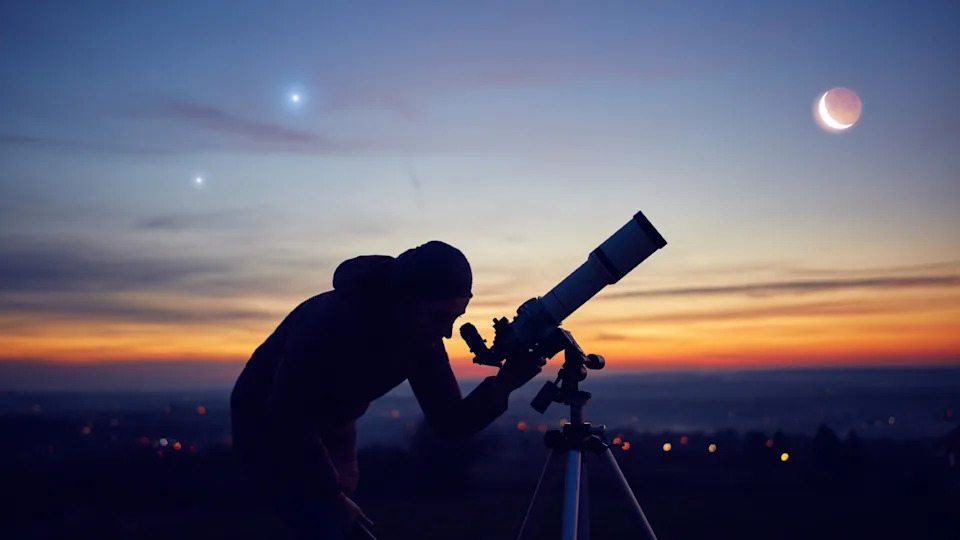July 2025 presents a unique opportunity for stargazers, despite being considered a “slack month” for planet viewing. The celestial lineup includes Mercury, Mars, Saturn, Venus, and Jupiter, each offering a distinct spectacle in the night sky. Here’s how to catch a glimpse of these planetary wonders this month.
In the evening sky, Mercury can be seen low in the west-northwest, though it will be challenging to spot against the bright twilight. The best chance to observe Mercury is during the first 10 days of July, using binoculars to enhance visibility. Mars, on the other hand, is fading as it moves away from Earth, appearing as a small, yellow-orange dot in the sky.
Saturn’s Spectacular Rings
Saturn starts July rising after midnight, gradually appearing earlier each night. By late July, it will rise during the late evening hours. The planet’s famous rings, slightly opened from their edge-on appearance last spring, are tilted less than 4 degrees toward Earth. This offers the best view of Saturn’s rings for 2025 before they begin to close during the fall and early winter.
For those interested in telescopic views, the Celestron NexStar 4SE is recommended for beginners seeking quality and reliable views of celestial objects. Saturn’s rings, visible through a telescope, remain a highlight for astronomers and enthusiasts alike.
Venus and Jupiter’s Dance
Venus continues to dazzle in the predawn sky, shining brightly among the stars of Taurus. The Bull’s brightest star, Aldebaran, is nearby, forming a striking celestial triangle with Venus. Meanwhile, Jupiter re-emerges from the bright morning twilight around mid-July, gradually climbing higher above the east-northeast horizon.
By the end of the month, Jupiter will approach Venus, setting the stage for a celestial dance that continues into early August. Observers are advised to use binoculars for a clearer view of these planets as they draw closer together.
Key Viewing Dates and Tips
For those planning to observe these planetary events, here are some key dates and tips:
- Mercury: Best viewed during the first 10 days of July, low in the west-northwest sky after sunset.
- Venus: Look for Venus in the east-northeast sky before sunrise, especially on July 21 when it forms a triangle with the moon and Aldebaran.
- Mars: Visible low in the west-southwest sky on July 28, near a waxing crescent moon.
- Jupiter: Begins to emerge in the east-northeast sky around mid-July, best viewed with binoculars.
- Saturn: Best seen telescopically during morning twilight, with rings at maximum inclination for 2025.
For those interested in capturing these celestial events, guides on the best cameras and lenses for astrophotography can assist in taking stunning photos of the planets and other wonders.
Expert Insight and Historical Context
According to Joe Rao, an instructor and guest lecturer at New York’s Hayden Planetarium, this month’s planetary alignments provide a rare opportunity for both amateur and seasoned astronomers. “Each planet offers a unique viewing experience, from Saturn’s rings to the close encounter of Venus and Jupiter,” he notes.
“This July, we see the famous rings tipped toward Earth at just about their maximum inclination for 2025, only 3.5 degrees,” Rao explains.
Historically, such planetary alignments have fascinated humans for centuries, often inspiring myths and legends. The visibility of these planets without the need for advanced equipment makes this month particularly special for stargazers.
As July progresses, the celestial dance of planets continues, promising more breathtaking views in the night sky. Whether you’re an experienced astronomer or a curious observer, this month offers a chance to connect with the cosmos in a profound way.
